

| Home | Log In | Register | Our Services | My Account | Contact | Help |
You are NOT currently logged in
dai oldenrich - 01 Sep 2006 13:32
click your browser refresh button to update charts
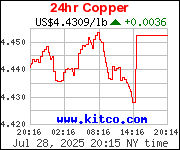
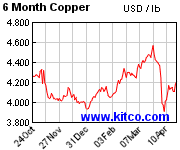
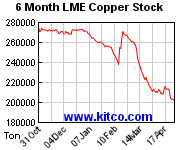
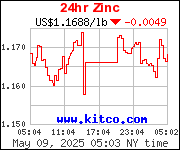
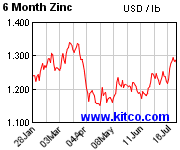
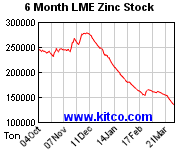
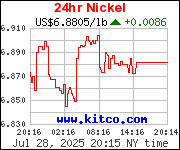
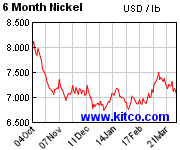
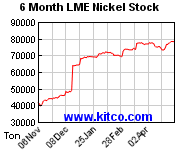
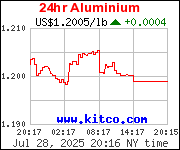
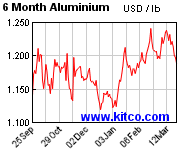
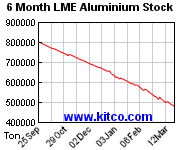
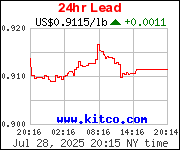
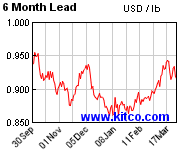
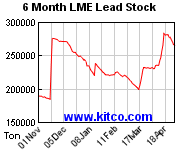
Also see: gold charts here silver charts here platinum charts here
dai oldenrich - 17 Nov 2006 07:05 - 171 of 181
MarketWatch - 16 November 2006
Gold futures suffer fifth losing session in a row
Gold futures fell Thursday to tally a loss of more than $15 during a five-session losing streak as lower energy prices and strength in the U.S. dollar dulled safe-haven demand for the precious metal
The dollar edged higher against the euro and the yen, gaining after a government report showed capital flows into the U.S. in September were sufficient to cover the nation's trade deficit for the month.
The report overshadowed tamer-than-expected data on consumer inflation for October, which boosted market expectations the Federal Reserve will have the leeway to cut interest rates early next year.
Overall, "gold has benefited from the apparent slowdown in inflation reflected in this week's data, and the potential impact this will have on interest rates," said James Moore, an analyst at London-based TheBullionDesk.com.
"As well, speculation of diversification away from the dollar is also proving positive for gold," he said in an afternoon note to clients.
But "the yellow metal is still struggling to clear $628-$630 short term ... a successful breach should see gold target $642-$645," he said.
Gold for December delivery closed down $2.10 at $621.70 an ounce on the New York Mercantile Exchange, retreating from a high of $629. The contract has now lost 2.4%, or $15.10 of its value after falling over five sessions, closing $2.50 on Wednesday alone after a report said global demand for gold fell in tonnage terms in the third quarter.
The latest U.S. economic data comes after a surprisingly tame producer price report on Tuesday eased fears that inflation pressure might force the Federal Reserve to raise interest rates again, pressuring the dollar. The dollar has been supported this year mostly by the interest-rate differential between the U.S. and Europe and Japan.
Gold traders "continue to focus on medium-term prospects for the U.S. currency, and are somewhat relieved that they are witnessing signs of emerging pre-season jewelry offtake," said Jon Nadler, an investment-products analyst at bullion dealers Kitco.com.
But "there were some pervious indications that luxury spending may not put in a strong showing this year and ... as a consequence, year-end seasonal gold demand might not be as robust as hoped for," he said in e-mailed commentary.
Gold prices were also pressured Thursday by a decline in crude-oil futures, which mirrored moves in natural gas. Natural-gas supplies rose last week for the first time in three weeks.
Other metals closed mixed Thursday, but copper futures saw a big drop, with its December contract down 5.35 cents to end at $3.041 a pound.
December silver futures closed flat at $12.945 an ounce, January platinum rose $18.50 to close at $1,189.30 an ounce and December palladium added $3.45 to close at $322.25 an ounce.
On the supply side, gold inventories were unchanged at 7.52 million troy ounces as of late Wednesday, according to Nymex data. Silver supplies were unchanged at 107.6 million troy ounces and copper supplies fell by 274 short tons to 25,818 short tons.
dai oldenrich - 17 Nov 2006 07:06 - 172 of 181
Nov. 17 (Bloomberg)
Copper Falls in Shanghai Towards Biggest Weekly Loss Since July - By Chia-Peck Wong
Copper prices in Shanghai fell and are headed for the biggest weekly decline in almost four months amid concerns that supply growth may outpace demand on rising stockpiles and production from China.
Copper output in China, the world's biggest user of the metal, may rise as much as 8.5 percent next year, Shang Fushan, director of the copper department of the China Nonferrous Metals Industry Association, said yesterday. Imports have been declining since October 2005. Stockpiles monitored by the London, New York and Shanghai exchanges have soared 39 percent in the past year.
``The outlook isn't positive as stockpiles keep increasing,'' Yuan Fang, a futures trader at Shanghai Dongya Futures Co., said by phone today.
Copper for January delivery fell as much as 1,380 yuan, or 2.2 percent, to 61,310 yuan ($7,789) a metric ton on the Shanghai Futures Exchange, the lowest since July 24. The metal has fallen 8.4 percent since Nov. 10's settlement price, making it the biggest weekly decline since the week ended July 21. It traded at 62,120 yuan by the midday break.
Metal for immediate delivery in Changjiang, Shanghai's biggest spot market, fell as much as 450 yuan, or 0.7 percent, to 63,650 yuan a ton today.
Stockpiles of the metal monitored by exchanges in London, New York and Shanghai totaled 215,626 tons as of yesterday, the highest since August 2004.
The deteriorating outlook for copper may lead more hedge funds to exit their holdings, said Yuan.
Hedge-fund managers and other large speculators increased their net-short position in New York copper futures in the week ended Nov. 7, according to U.S. Commodity Futures Trading Commission data issued Monday.
Speculative short positions, or bets prices will fall, outnumbered long positions by 13,640 contracts on the Comex division of the New York Mercantile Exchange, the Washington- based commission said in its Commitments of Traders report. Net- short positions rose by 2,697 contracts, or 25 percent, from a week earlier.
Copper for three-month delivery on the London Metal Exchange fell as much as $80, or 1.2 percent, to $6,730 a ton, matching yesterday's intraday low, or the lowest since June 28. It traded at $6,740 a ton, down $70, or 1 percent, at 11:52 a.m. Shanghai time.
Metal for delivery in March fell 1.20 cents, or 0.4 percent, to $3.063 a pound on the Comex division of the New York Mercantile Exchange in after-hours trade at 11:43 a.m. Shanghai time.
dai oldenrich - 17 Nov 2006 07:06 - 173 of 181
FT.com - November 16 2006
Metal remained rangebound but copper fell 1.6 per cent to $6,800 a tonne after Bloomsbury Mineral Economics forecast the refined copper market would have a surplus of 45,000 tonnes next year against its previous forecast for a deficit of 130,000 tonnes.
Growth in Chinas fixed-asset-investment (a key driver of industrial production) slowed significantly to 16.8 per cent year on year in October from 23.6 per cent in September, which suggests government moves to cool the economy are working.
dai oldenrich - 17 Nov 2006 07:40 - 174 of 181
maddoctor - am away on xmas hols next week (someone has to do it !!) - stay lucky.
maddoctor - 17 Nov 2006 08:36 - 175 of 181
have a good hols , happy xmas
e t - 07 May 2007 08:15 - 176 of 181
May 7 (Bloomberg) - Metals Bubble Poised to Burst on Increasing Supplies - By Millie Munshi
Copper, nickel and lead, the best performing commodities in the past four months, may be the worst by year-end.
On Wall Street, the chorus is getting louder that rising metal supplies are outpacing demand. From Goldman Sachs Group Inc. to JPMorgan Chase & Co. to Societe Generale, there are warnings of a mania that is showing all the signs of a climax. ``This is a real bubble,'' says metals trader David Threlkeld, who first got the world's attention in 1996 when he showed that copper hoarding by Sumitomo Corp. trader Yasuo Hamanaka would lead to a market collapse. Once again, ``we have an enormous amount of unsold copper,'' says Threlkeld, president of Resolved Inc. in Scottsdale, Arizona. The metals bears are convinced that consumption may drop partly because China, the biggest user, is attempting to reduce investment through interest-rate increases and lending curbs after the economy expanded 11.1 percent in the first quarter. Demand is also weakening because of a slowing U.S. economy and a consumer-driven pursuit of alternatives to historically expensive copper and nickel, according to Stephen Roach, chief economist at Morgan Stanley, the second-largest securities firm by market value. Copper will decline 30 percent to an average of $5,650 a metric ton in the fourth quarter from more than $8,000 today, according to the median of 12 analysts' forecasts compiled by Bloomberg. Nickel and lead will drop about 50 percent from record prices reached on May 4, the data show. The anticipated slump would depress exports from Australia, Canada and Chile, wipe out more than $22 billion on the London Metal Exchange and squeeze the profits at mining companies from BHP Billiton Ltd., the largest in the world, to OAO GMK Norilsk Nickel, the biggest metals producer in Russia.
To be sure, many of the bears were wrong so far this year. An investor who acted on the advice of JPMorgan, the third- largest U.S. bank, missed gains of 67 percent for nickel, 30 percent for copper and 41 percent for lead, the best-performing commodities in the 26-member UBS Bloomberg CMCI Index. That compares with a 6.2 percent increase for the Standard & Poor's 500 Index and 2 percent for U.S. Treasuries, according to Merrill Lynch & Co. indexes. ``We're sticking to our guns'' because ``prices are unsustainable,'' said London-based Jon Bergtheil, head of global metals strategy at the bank, on May 2. Nickel may average $35,328 a ton in 2007, down from $51,600, because stainless steelmakers might buy less in the second half, he said. Bergtheil in February said that nickel would decline 25 percent in 2007. The metal, used to make stainless steel, has since gained 40 percent.
Nickel may plunge to $30,000 a ton by the end of 2008, because the current level is ``overdone,'' Goldman Sachs analysts led by James Gutman in London said in an April 2 report. ``There is a risk of longer-term demand destruction.'' Stainless-steel producers are canceling orders, he said. His colleague in London, Jeffrey Currie, head of global commodities research, was less bearish last week, saying he expects metals prices to be ``trading sideways'' this year. The record copper price of $8,800 a ton reached last May was the peak, said ABN's London-based analyst Nick Moore. He recommended selling copper in December because global supplies were growing. He declined further comment in a May 3 e-mail, saying he couldn't discuss changes to price estimates before they were published. Copper for three-month delivery ended at $8,320 a ton in London on Friday.
World supplies of copper outpaced demand by about 50,000 tons in the first quarter, Stockholm-based copper producer Boliden AB said May 3. Global output rose 8 percent in the period, twice as much as demand, the company said. Chile, the world's biggest supplier of the metal, said production jumped 13 percent in March as high prices encouraged miners to increase supply. Output rose to 502,106 tons from 442,410 tons a year earlier, the Santiago-based National Statistics Institute said April 26. Nickel stockpiles tracked by the London Metal Exchange, the world's largest metals bourse, rose almost 60 percent since dropping on Feb. 6 to 2,982 tons, their lowest since July 1991 and barely enough to supply the world for a day. Lead inventories are also rising, gaining by 42 percent since March 13 on the LME, to 43,825 tons. A surplus of 25,000 tons of lead may exist next year, from a deficit of 35,000 tons forecast this year, Natixis Commodity Markets Ltd. said in a quarterly report on May 1. The metal's record price is likely to trigger more exports from China, said Natixis, one of 11 companies trading on the floor of the LME. Lead for three-month delivery ended at $2,115 a ton in London on Friday.
Some of the world's biggest users of metal are finding ways to reduce consumption. Pohang, South Korea-based Posco, the world's fourth-largest steelmaker, said April 25 it will increase output of nickel-free stainless-steel fivefold next year. Nickel helps make steel corrosion-resistant. Morgan Stanley's Roach, who will soon become the bank's chairman in Asia, says commodities are poised to crash in the same way they did in May 2006, when a 5.4 percent weekly decline in the Reuters-Jefferies CRB Index was the biggest tumble since December 1980. ``Watch out below for yet another reversal of commodity froth,'' Roach said April 26. ``It's deja vu spring of 2006.'' He correctly predicted the slump in commodities 12 months ago.
Roach anticipates a drop in commodities because China will increase interest rates to slow the economy and inflation, while a slowdown in U.S. housing will rein in consumer spending. China ordered banks on April 29 to set aside more money as reserves for the seventh time in 11 months to try to prevent the world's fastest-growing major economy from overheating. Lenders must put aside 11 percent of deposits starting May 15, up from 10.5 percent. The increase will draw 170 billion yuan ($22 billion) from the financial system. China raised borrowing costs three times since April last year, and will increase rates twice more this year, according to a Bloomberg survey of economists. In the U.S., the world's biggest economy, growth slowed to a 1.3 percent annual pace in the first quarter from 2.5 percent in the fourth. An index of pending sales of existing homes fell 4.9 percent to the lowest level in four years in March, the National Association of Realtors said.
Bullish metals investors expect China will fail to curb growth, according to Tony Dolphin, director of strategy and economics at Henderson Global Investors in London, which oversees about $125 billion. ``The speculative element in commodities hasn't been affected by the slowdown in the U.S. economy,'' Dolphin said. ``The expansion we're seeing in China and India has kept the speculators in.'' Even the largest U.S. pension fund, the California Public Employees Retirement System known as Calpers, is chasing commodity returns after years of holding stocks and bonds. The fund in March invested $450 million in the Goldman Sachs Commodity Index. ``Strength in commodity markets will be something we should see generally over the next 10 to 20 years,'' said Russell Read, the chief investment officer, in an April 24 interview. ``We see a relative shortage of commodities stemming from a boom in demand from emerging markets, particularly India and China.''
`Crash' Possible
Any further gains will be fleeting, according to Societe Generale's head of commodities research, Frederic Lasserre. He expects commodities will extend their rally and rise close to near-record levels in the third quarter of this year, before falling back.
The gains in metals are ``100 percent-driven by funds,'' said Resolved's Threlkeld. ``At some point the funds are going to want to take a profit. And when that happens there could be an almighty crash.''
cynic

 - 07 May 2007 09:01
- 177 of 181
- 07 May 2007 09:01
- 177 of 181
from here, i do not see the physical demand for stainless, and thus by definition, iron ore, nickel and copper and moly reducing over the next 12 or 24 or perhaps even 36 months ..... have a look at today's Telegraph biz section and the article re the boom in cargo shipping.
gold, of course, has a mind and logic of its own!
gold, of course, has a mind and logic of its own!
e t - 07 May 2007 16:59 - 178 of 181
WORLD TRIBUNE.COM - By Sol Sanders
The Chinese bubble is about to pop
All signs point to an approaching Chinese economic crisis.
Given the lack of transparency, the impact of the coming landing is even less predictable than such economic developments elsewhere.
There are daily announcements by Communist leadership aimed at cooling an overheated economy. But most are fictitious, a cover for bottlenecks in some sectors, unrestrained speculation in others. So any divination is just that.
There is no denying the remarkable last decades progress. GDP growth figures are probably exaggerated. The truth is nobody really knows. [One cannot forget an angry ex-Prime Minister Zhu Rongzi publicly dressing down regional officials for giving him manufactured figures.] Given the fact that 80 percent of Chinas more than one billion do not share in success of the effort to introduce a liberal economy in a totalitarian state, we have little history to judge the whole experiment.
But here is intelligent Shanghai gossip:
Despite all restrictions, held in place by occasional draconian prosecution [executions], for corruption, illegal hot money has poured in. Theoretically Beijing has control of its currency. In fact, in 1997, Zhu, with controls and by juggling export subsidies, spared China the effects of the East Asia Financial Crisis. But that was eons ago in Chinese economic development. Once again, the Chinese have proved their phenomenal entrepreneurial talent. The central banks hard currency reserves are now reaching an incredible trillion dollars. That, in turn, introduces inflation with the exchange of imported dollars for renminbao.
Speculators believe, despite all government statements [and the hard line Chinese leaders took with Vice President Cheney this week on American demands for reevaluation], upward movement will come. They want a slice when they trade back into dollars.
China is suddenly facing an overall trade deficit nearly $9 billion in the first quarter and likely to grow exponentially. That is despite its enormous U.S. trade surplus. probably as much as $142 billion last year, and probably growing even more rapidly as U.S. consumer confidence sucks in more consumer goods. The overall trade deficit, likely to snowball so long as Chinas export boom continues, results from a growing import bill for raw materials [and components for assemblies China exports]. Ironically, China itself pushes world prices. China has become the worlds second largest oil importer [after the U.S.] with prices rising. [Chinas oil imports increased 38 percent last year; predictions were for a fuel imports doubling this year.] Chinas pull has inflated world prices for example, benchmark hot-rolled-sheet price jumped 80 percent to $500 a net ton, a 15-year high.
All this has pressured Chinas claptrap financial system. Despite repeated statements by the authorities to brake lending, Chinas four main banks probably have increased it by 10 percent just this year. Thats despite signs some sectors are piling up inventories Shanghai and Beijing real estate, household appliances, automobiles. Again nobody knows, but nonperforming loans may be 50 percent or higher. And, again despite repeated statements, banking practices have not changed. One important reason: Chinas huge, Soviet days white elephants, so-called state-owned enterprises [SOEs], are bleeding the banks with their enormous political influence and the fear of additional unemployment were their bankruptcy finally faced. [Recently, Prime Minister Wen Jiatao trotted out the argument their maintenance in the Northeast rustbelt was a matter of national security.] One danger, of course, is of a run on savings institutions by Chinas incredibly frugal savers when a switch back to dollars after a postponed reevaluation.
Chinas economic fragility is not just a problem for Beijing. As the Chinese maw has grown, it has become a growing market for its neighbors. Thailand, Singapore, Malaysia, Philippines and Australia have seen their exports to China including manufactures grow by as much as 50 percent. Japan is coming out of its decade of stagnation, in part because of the fillip Chinese exports have given its still only partially reformed export-led economy. South Korea, caught in political and economic crosscurrents, counts on its China boom for its high tech exports to buoy it until domestic demand returns. Even the U.S., however much it might complain over the loss of jobs to China, continues to have a lower inflation rate in part because Beijing [as well as Tokyo, Seoul, Taipei and Hong Kong] gobble up its treasury notes, halting any crowding out of private sector borrowing in capital markets.
Beijings new leadership, noted for its non-risk-taking past, is caught in the headlights. It dare not fiddle with the currency tied to the dollar, its only stable economic tool. On the other hand, even if no one else does, Chinese Communists remember their rise to power owed as much if not more to runaway inflation in the last years of the Chiang Kaishek regime as to battlefield victories. [The Chinese inflationphobia is as great as the Germans who remember the 20s inflation that brought Hitler.]
An hour of decision is approaching rapidly.
e t - 07 May 2007 17:06 - 179 of 181
FT - May 6 2007
Chinas stock market
However you measure it, the Chinese stock market is a bubble. Top cadres have warned as much. New offerings are doubling in value on day one and shareholder accounts are multiplying at a phenomenal rate. So far this year, the domestic currency A share market is up 43 per cent and daily turnover exceeds $30bn.
The authorities face a stark choice: act now to deflate the bubble or wait for the inevitable implosion and equally inevitable street protests. But Beijing has limited tools with which to take pre-emptive action. Verbal warnings and the stemming of credit by hiking banks reserve requirements have both failed. Interest rates would need to be sky-high before investors spurned the stock market, up almost 1 per cent a day in the past two months, while bank deposits currently yield negative returns in real terms.
____________________________________________________________________
.....................and so on and soforth. It all just has to go pop some time soon.
Anyone believing that the present frenzy in rising markets will continue much longer is simply deluding themselves.
It's a real world that we live in and a very simply fact of life is 'what goes up must come back down again'.
Often with quite a bump!
cynic

 - 07 May 2007 18:11
- 180 of 181
- 07 May 2007 18:11
- 180 of 181
don't confuse commodity requirements with a rising stock market or even rising commodity prices, both of which can and often are driven by speculation ...... although nothing rises or falls inexorably, it is a matter of fact that China (and India and Pakistan) not only needs huge imports of raw materials to satisfy its domestic demands, but China (and India and Pakistan) has become one of the very top manufacturing and exporting countries in the world.
e t - 10 May 2007 23:17 - 181 of 181
Copper Falls Most in Three Months on Signs of Slowing Demand - By Millie Munshi
May 10 (Bloomberg) -- Copper futures in New York tumbled the most in three months on signs that demand may slow in China, the world's largest user of the metal used in pipes and wires. Stockpiles in Shanghai Futures Exchange warehouses have more than doubled this year to the highest since December 2005, indicating that China may buy less copper from overseas. Futures had climbed 32 percent in the two months before today as China's imports surpassed last year's pace for four straight months. ``We're expecting to see a deceleration in Chinese imports,'' said Mark Liinamaa, a metals analyst with Morgan Stanley in New York. ``It's likely that they got a little ahead of themselves in the first part of the year and imported more than their overall need.''
Copper futures for July delivery fell 11.25 cents, or 3.1 percent, to $3.5665 a pound on the Comex division of the New York Mercantile Exchange. The drop was the biggest since Feb. 2, when most-active futures fell 4.3 percent during a rout in global equity markets. ``A large reason you've seen copper pullback is because China has slowed down a little bit in their buying,'' Kevin Kerr, president of Kerr Trading International in Wilton, Connecticut, said in an interview May 7.
Metal for immediate delivery in Changjiang, Shanghai's biggest cash market, fell as much 2.6 percent today. Cash prices have remained lower than front-month futures prices, suggesting enough supplies are in the spot market to meet demand.
Pulling Out
``People have started pulling out of the market,'' Liinamaa said. Morgan Stanley estimates that copper will average $3.05 a pound this year, down 14 percent from today's close. The metal has averaged $2.98 so far this year. Traders who follow historical price charts also sold copper today, said Marc Kaplan, president of Mews Metal Trading LLC in Verona, New Jersey. Copper's so-called relative strength index, which gauges how rapidly prices have gained or fallen, reached 71.3 on May 1. Readings above 70 indicate a price may be poised to fall. ``Prices had been moving very quickly,'' Kaplan said. ``The price has probably gotten too high, and people are starting to take some money off the table.''
On the London Metal Exchange, copper for delivery in three months fell $160, or 2 percent, to $7,890 a metric ton. The metal reached a record $8,800 on May 11, 2006. A futures contract is an obligation to buy or sell a commodity at fixed price for delivery by a specific date.

